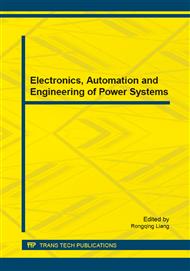p.398
p.403
p.408
p.412
p.416
p.422
p.428
p.435
p.443
A Rule-Based Opto-Electronic Detection and Target Recognition System
Abstract:
Opto-electronic detection and target recognition systems are widely used in the detection, monitoring, identification and other fields. In order to improve the flexibility and accuracy of this kind of system, we involved artificial intelligence technology into this area. As one of the most successful technology of artificial intelligence, expert systems (rule based systems) are widely used in industrial and intelligent control and other fields. This paper presents a general model of the rule based opto-electronic detection and object recognition systems. The model relies on the expert system tool—CLIPS which supports inference engine for reasoning. And a learning algorithm is used to generate the inference rules. In order to make the generated rules are easy to understand, decision tree algorithm was selected to apply in this general model. Finally, the model is applied to a vehicle identification test, a benchmark standard data-set from UCI machine learning repository was selected for this experiment. The experimental results show that the system has higher accuracy. Furthermore, this system is flexible for other target recognition as well, when the rules of relevant targets were added to this system.
Info:
Periodical:
Pages:
416-421
Citation:
Online since:
February 2015
Authors:
Keywords:
Price:
Сopyright:
© 2015 Trans Tech Publications Ltd. All Rights Reserved
Share:
Citation:


